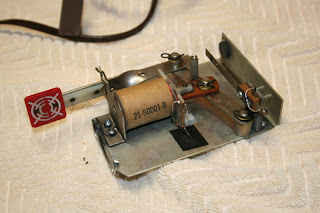According to this info,
the SSU-1 is driven by transistors on the solenoid board (SDU-1) where the MPU board selects which sounds to play, triggers the appropriate driver transistor on the SDU which in turn selects the sound to be played on the sound board. Sounds are tested during the solenoid test where each of the four sounds should be played once for each respective solenoid transistor. The other SSU boards are driven directly from the MPU board, freeing up solenoid transistors for other game functions. For SSU-1, each of the four sounds is triggered by one of four transistors on the SDU, specifically, Q3, Q10, Q12, Q13. These are connected from J2 on the SDU, to the 8 pin pigtail that hangs off the SSU-1. The pin mappings are as follows:SDU J2 Pin -> SSU-1 pigtail Pin
2 (Q10, Red-Vio wire) -> 25 (Q12, Yel-Green wire) -> 56 (Q3, Brn-Blu wire) -> 37 (Q13, Grn-Blk wire) -> 4
Which means I have been looking at the wrong board, I've been looking at the main processor board when I should be looking at the Solenoid board. This makes sense as I have had to replace several transistors on the SDU already, looks like I may have another bad one!
This is good news and gives me hope for a real fix!


















































